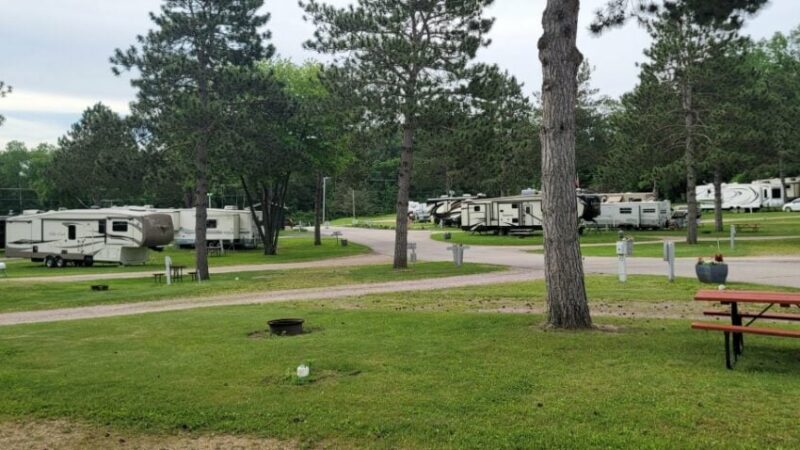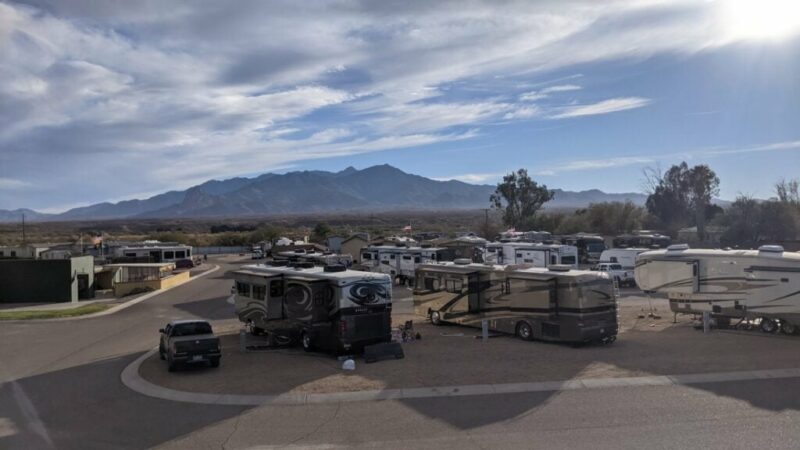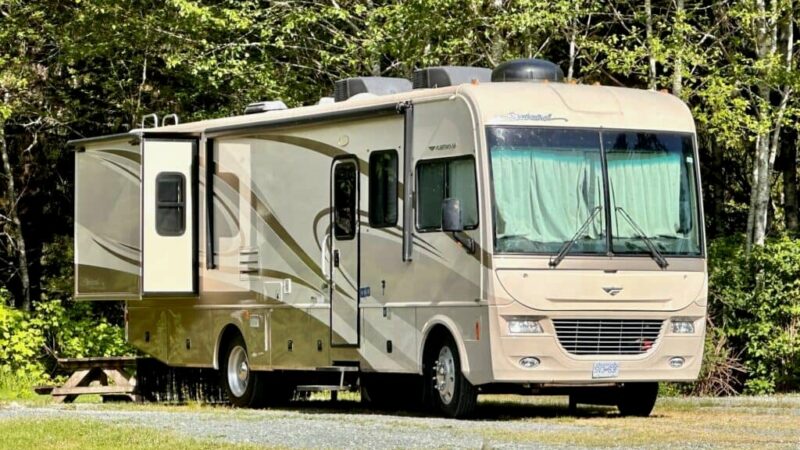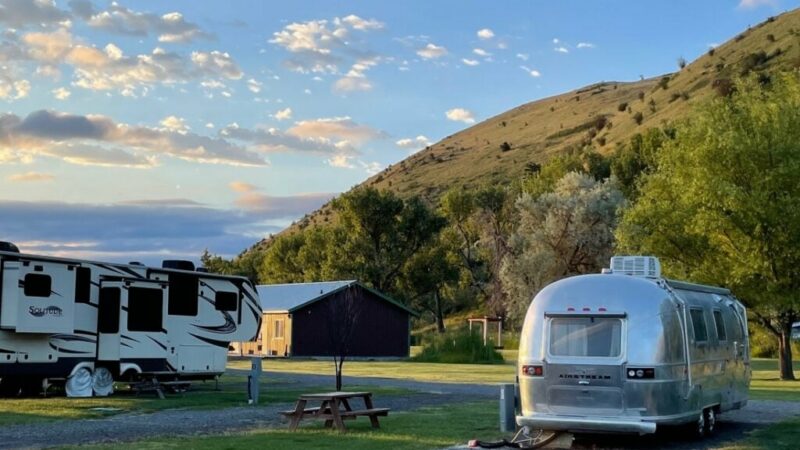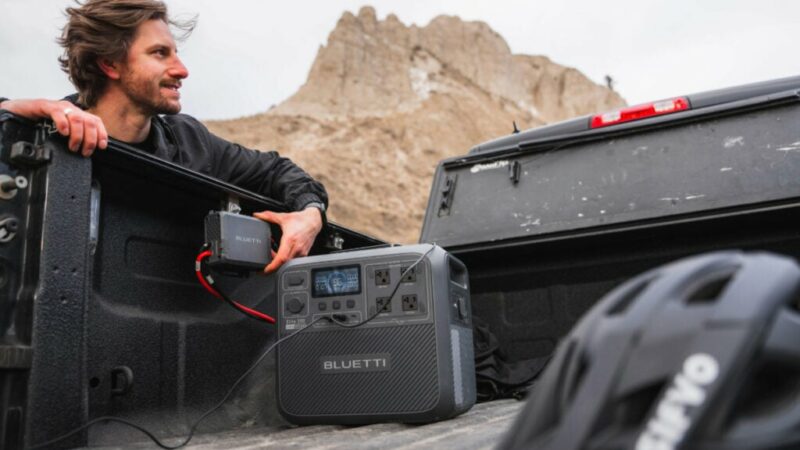The Ultimate RV Adventure: Exploring Grand Canyon National Park
There is nothing more awe-inspiring than your first view of the Grand Canyon. It’s a bucket-list, must-do RV trip you should be compelled to put on your next RV adventure planner.
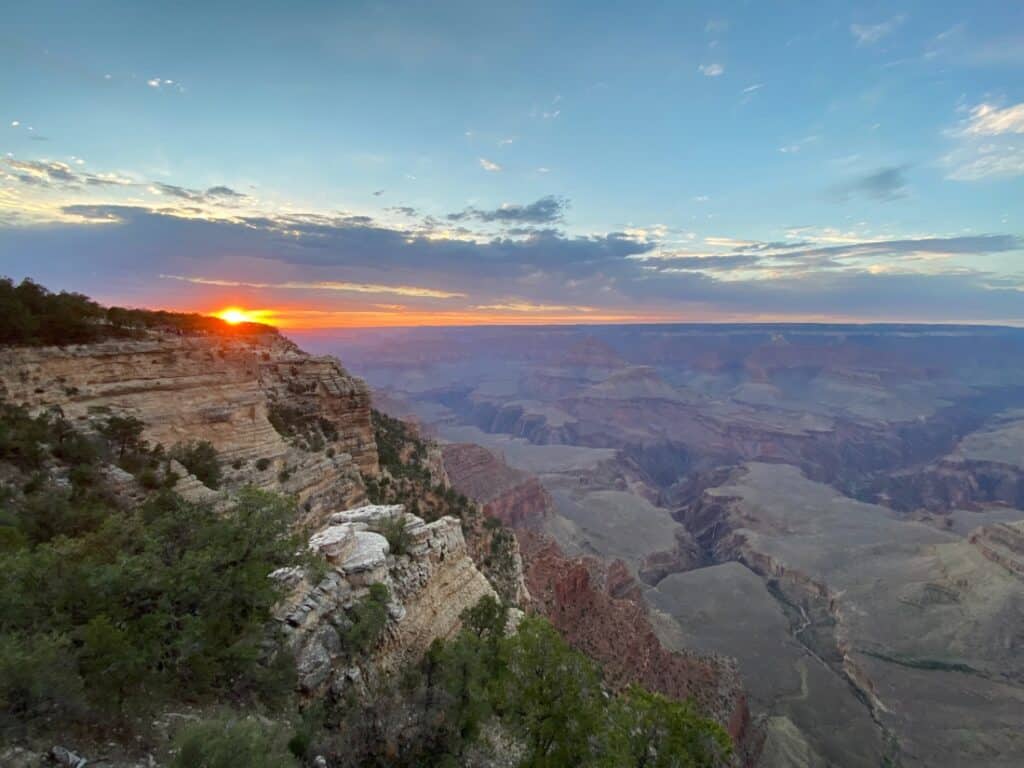
This national landmark is 277 river miles long and up to 18 miles wide with stunning views, wildlife, and great opportunities to get out and have an adventure. Just the wonder of this park with wildlife and beautiful vistas is nothing short of awesome.
Plan Your Grand Canyon RV Adventure
You will want to plan your trip well ahead of your scheduled dates. Plan to make your reservations about six months to a year out. The south rim of the Grand Canyon is the most popular tourist area, and of course the busiest. A great time to visit is between March and May or September and November when the temperatures are cooler and the crowds are smaller. In 2023, the park had some 5 million visitors.
The North Rim of the Canyon is also an option if you want to take in the beauty of nature in a quiet atmosphere. At the North Rim you can hike 14 miles into the canyon on the North Kaibab Trail. If you choose to utilize your RV at a North Rim Campground you won’t find any hookups. You could choose to stay at the Grand Canyon Lodge with a nearby gourmet restaurant and a large indoor veranda. Some say it is one of the best places to stay in the park.
Online Planning Tools
Don’t forget to utilize the RV LIFE app for maps and campground information.
RV LIFE Trip Wizard lets you plan your trip, complete with a map of your journey, and stops along the way, including campgrounds, restaurants, and gas stations. You input your RV information and particulars regarding the trip and the app will plan your route to avoid low bridges, dirt roads, toll roads, and more. You will also get a calculation of expenses based on your vehicle input, etc.
RV LIFE Campgrounds lets you look at specific campgrounds, get pricing, and see reviews that include real feedback from actual RVers who have been there. You can also see pictures of the parks, find out about amenities, and get contact information to pick the best place for your rig and your family.
The Cost of Your Grand Canyon RV Adventure
You will need to pay to get into the Grand Canyon National Park. You can pay when you get there or get your passes online. Remember, there may not be great cell service and you will need to show your pass, via your phone, so be aware and have it available offline. Passes are $35 for a 7-day private vehicle pass. Go to nps.gov for more information and to purchase your pass before your visit.
A great way to save money is to purchase a National Park Pass for about $80. The America the Beautiful National Parks Pass is good at all National Parks in the US. (https://store.usgs.gov/pass/index.html ) Once you have this, you can get into the Grand Canyon for free. The pass admits the cardholder and any passengers in a non-commercial vehicle. Visitors can also get in free if they hold Interagency Passes, Golden Passports, National Parks and Federal Recreational Lands Passes, Grand Canyon passes, or are 16 years or younger.
Where to Stay in Grand Canyon NP
Only one campground within the park will accommodate larger rigs and has full hookups. Trailer Village, at the South Rim, is the only RV campground with full hookups inside Grand Canyon National Park. This campground is open year-round with pull-through sites and can accommodate RVs up to 50 feet long.
Mather Campground is open year-round and can accommodate RVs up to 30 feet. In the summer, the NPS recommends making a reservation (recreation.gov) at least 6 months in advance. In the winter, the sites are first-come, first-served. Mather Campground does not have any electric, sewer, or water hookups. There is a dump and water fill station nearby.
If you didn’t make reservations, the South Rim’s Desert View Campground might be a place to park your RV. This campground has 50 first-come, first-serve sites with no hookups and can accommodate RVs up to 30 feet long. It is located 26 miles from Grand Canyon Village and is home to some spectacular views of the Colorado River. It has its own visitor’s center and ranger programs.
Where to Stay Outside Grand Canyon NP
Certainly, there are RV parks outside of the National Park or there are opportunities to boondock in the Kaibab National Forest’s Indian Hollow Campground. You can stay there for up to 14 days.
For the extremely adventurous, check out Tuweep Campground where you will need a high clearance rig with a combination of RV and car of fewer than 22 feet long. This campground is located in one of the most remote parts of the national park and offers some of the Grand Canyon’s most dramatic viewpoints. The access is challenging and demands skills in negotiating difficult roadways.
Toroweap Overlook is at 3,000 vertical feet above the Colorado River. The volcanic cinder cones and lava flow in this ancestral home of the Southern Paiute people make this area unique.
Top 10 Park Attractions
1. Hike Bright Angel Trail
Bright Angel Trail begins at Grand Canyon Village and descends into the canyon for 8 miles. It connects with the Tonto Trail, The Plateau Point Trail, and the River Trail. As this trail is quite strenuous, you might want to join a mule train and descend with four legs instead of two. Check out the natural arch that is near the start of the trail.
2. Check out the Overlooks
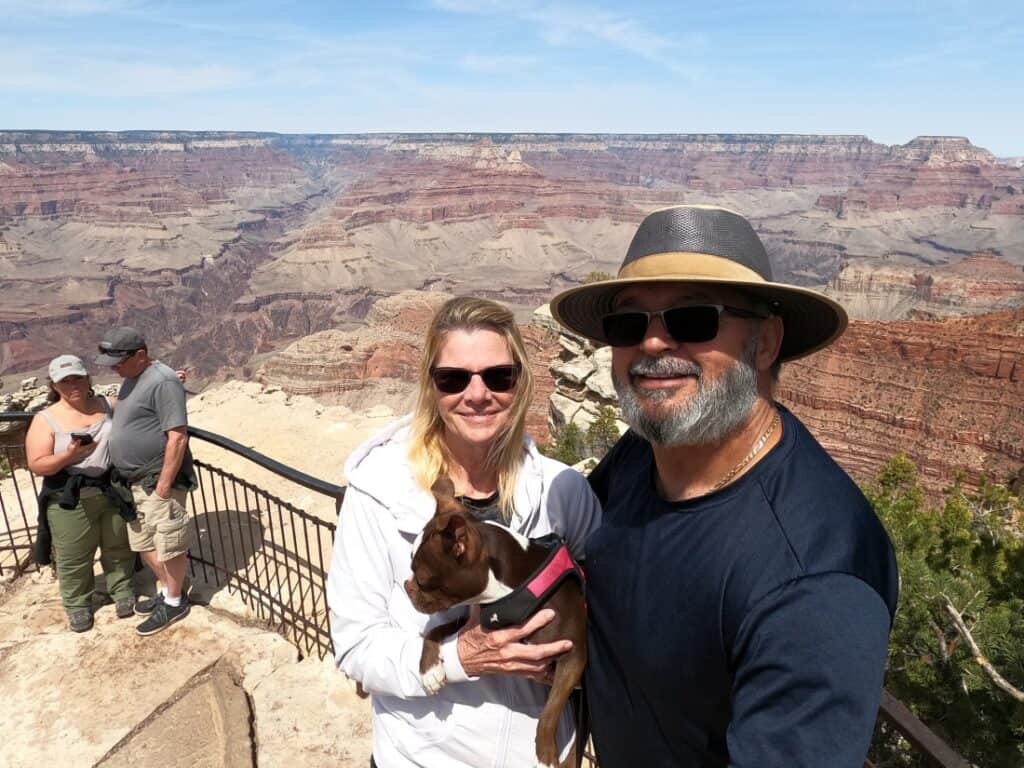
As you arrive at the Grand Canyon, check out Mather Point, which is adjacent to the visitor center. It provides panoramic views of the canyon. You will want plenty of pictures when you see the Coconino Sandstone and Kaibab Limestone rock layers, as well as the first look a mile below into the canyon. This overlook has two lookout points. It was named for Stephen Mather, the first director of the National Park Service and one of the first advocates for establishing the Grand Canyon National Park.
Mather Point is also a great place to watch the sunset. Then take the free shuttle to Yaki Point which is another popular place for viewing the sunrise and sunset. Look down at the South Kaibab Trail as it weaves its way to the Colorado River. There are also fantastic views looking east.
3. Take a Scenic Drive
Take a scenic drive along the East Rim for panoramic views of the canyon and the Colorado River. Be sure and stop at Grandview and the Desert View Watchtower on this 26-mile route.
Cape Royal Drive on the North Rim offers different views from the short trails at the North Rim Lodge. Point Imperial Drive features jagged tops and massive plateaus. Hermit Road Drive offers awe-inspiring views, including a 270-degree view of the canyon at Hopi Point.
Mt. Trumbull Scenic Loop Drive leads from St. George, Utah to Mt. Trumbull and Toroweap and ends at Pipe Spring National Monument. You will need a high-clearance, four-wheel drive vehicle for this one. Always know before you go as this road could be impassable during the winter due to snow, ice, and mud.
4. Walk the Rim
The rim trail goes from Mather Point to Yavapai Point and Geology Museum and is an easy 0.7 miles. Hike from Yavapai Point to Verkamp’s Visitor Center, which is about 1.4 miles.
For a more strenuous hike on your Grand Canyon RV adventure, take the North Kaibab trail to the South Kaibab trail for a 20.4-mile point-to-point trail. It is a popular hike for backpackers.
5. Enjoy a free daily Park Ranger program
From the visitor center, take the blue shuttle to the Shrine of the Ages. This is a multi-functional venue that provides daily free park ranger programs.
6. Drive to Desert View Watchtower
This is a 22-mile drive from the visitor center along the canyon’s rim. Pack a picnic lunch and check out the Grandview Trailhead, Moran Point, the Tusayan Museum and Ruin, Lipan Point, or the Navajo Point. Desert View Watchtower has information, Hopi murals, cultural demonstrations, and passport stamping. You can also climb the stairs up the tower.
7. Visit Hermit’s Rest
Hermit’s Rest was built in 1914 at the western end of Hermit Road at the south rim of the canyon. This historic stop serves as the gateway to backcountry hiking trails that originate from the Hermit Trail, a steeply winding path into the canyon. The structure was built to resemble an old miner’s cabin with native stonework, a giant alcove fireplace, and a front porch. These days it offers a gift shop, snack bar, and west-end views of the Grand Canyon.
8. Enjoy Stargazing
The Grand Canyon is also a great place for stargazing because of its remote location, high elevation, and low light pollution. It has been an International Dark Skies Association park since 2019. The best places to see the night sky in all its glory include Mather Point, Desert View Watchtower, Moran Point, Lipan Point, Hermit’s Rest, and Rim Trail.
You can also check out many ranger-led activities, including constellation talks and hikes along the rim during a full moon.
9. Fly over the canyon on a helicopter tour
For a more unique perspective of the Grand Canyon, take a helicopter tour. The trip will cost around $350 but will allow you to see parts of the Canyon that you cannot see from the ground.
10. Visit the Grand Canyon Skywalk
The horseshoe-shaped walkway extends almost 70 feet over the canyon at the Hualapai-owned Grand Canyon West. It is not part of the National Park Service or Grand Canyon National Park. Look down if you dare at the 4,000 feet of vertical beauty. Check out the website for more information. A basic ticket starts at $68 per person.
Tips
Plan Ahead
Plan your Grand Canyon RV adventure at least six months ahead and if you plan to camp in the backcountry, you will need to apply for permits ahead of time, as well.
Avoid Long Lines at the Entrance
- Visit outside of the Memorial Day to Labor Day (summer season).
- Plan to enter the park on a weekday.
- Arrive at the entrance either before 10 a.m. or after 2 p.m.
Take Advantage of the Park’s Free Shuttle System
Finding a parking space in Grand Canyon National Park South Rim can be challenging. Take advantage of the Park & Ride which is free with your park pass purchase. It will take you inside the park and drop you off at the Visitor’s Center. First, park outside the park in Tusayan and take the shuttle into the park. You can even park your RV in designated areas at the Park & Ride, The RP’s Stage Stop, the Grand Canyon Visitor Center, and the IMAX theatre.
Once you are dropped off at the Visitor’s Center, you can transfer to the in-park complimentary shuttle that will take you to all the trailheads, viewpoints, and attractions.
Never Hike Unprepared
During warm-weather hikes, do not plan your outing between 10 a.m. and 4 p.m., when the midday heat can be dangerous. Bring plenty of water and sunscreen.
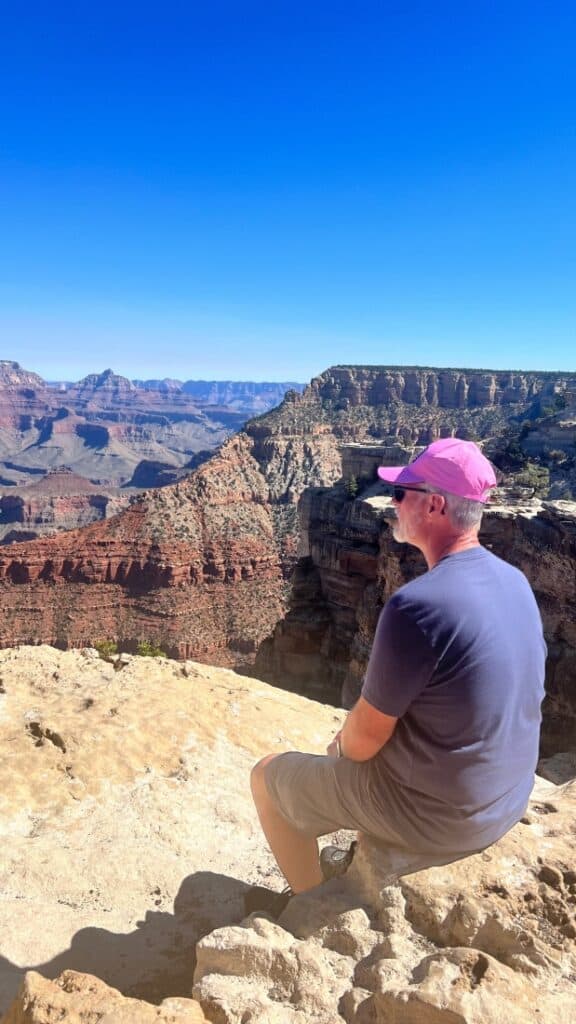
Know Pet Policies
Dogs are not allowed below the canyon rim and must be leashed at all times. The South Rim has a pet kennel and pet-friendly hotel rooms. The 12-mile paved Rim Trail allows your dog to hike with you.
Dogs are allowed in Mather Campground, Desert View Campground, and developed areas.
Keep your dog safe from the heat. Hot asphalt can burn your dog’s feet. Also, never leave your dog in a parked car as temperatures can become deadly quickly.
Your Grand Canyon RV Adventure Awaits!
An exciting RV Grand Canyon adventure awaits at Grand Canyon National Park. From history and adventure to hiking, sightseeing, and relaxing under a dark sky, you are sure to make memories with your friends and family.
The post The Ultimate RV Adventure: Exploring Grand Canyon National Park appeared first on RV LIFE.
Source: https://rvlife.com/the-ultimate-rv-adventure-exploring-grand-canyon-national-park/


